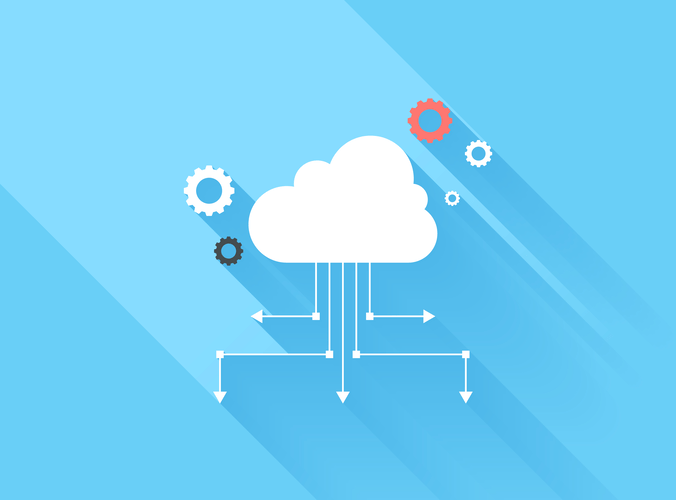Fog Vs Cloud Computing: Differences And Similarities
0
To meet the rising demand for IoT options, fog computing comes into action on par with cloud computing. The function of this article is to match fog vs. cloud and let you know extra about fog vs cloud computing potentialities, in addition to their execs and cons. Overall, fog and edge computing are highly safe in comparison with the cloud. So, if knowledge safety is your prime priority, opt for edge and fog. Enhanced response times, higher bandwidth availability, and higher operational efficiency than cloud and fog computing.
IoT improvement and cloud computing are among the many core competencies of SaM Solutions. Our extremely qualified specialists have huge expertise in IT consulting and custom software program development. We’ve already got used to the technical time period cloud, which is a network of multiple devices, computers and servers connected to every other over the Internet. In brief, the process may be difficult to scale, particularly during the enterprise growth part. Cloud computing addresses these challenges by offering computing assets as scalable, on-demand services. Edge, fog, and cloud are essential computing frameworks that may empower businesses to thrive in today’s advanced technological ecosystem.
The Professionals & Cons Of Cloud Computing For Iot
This distributed mannequin presents a number of advantages, together with lowered latency and faster knowledge retrieval. Moreover, it could better support real-time functions that require quick access to large quantities of information. Because cloud servers are hosted off-site in dedicated data facilities, they’ll shortly respond to consumer demand by tapping into further assets and scaling up to meet increased wants. In contrast, fog computing relies on native hardware, which may be slower to reply due to factors corresponding to latency and restricted bandwidth. At a basic degree, cloud computing and fog computing are related in that they each involve the distant use of computing power and sources.
Fog computing makes use of a person networking panel for knowledge processing as a substitute of utilizing centralized cloud platforms. It allows users to retailer, calculate, communicate and process knowledge by letting them access the entry factors of assorted service providers. While fog computing has some advantages over cloud computing, it isn’t prone to substitute it completely. Fog computing is extra environment friendly as a end result of knowledge is processed nearer to the supply, which reduces latency. It can be safer because knowledge does not have to travel as far and is, due to this fact, much less likely to be intercepted.
For instance, if a facility generates data and that information is processed directly at the edge on the power web site, there isn’t any must rely on the internet. With fog computing, you see a decentralized method that makes use of the sting of the community for information storage and processing. Cloud computing provides internet-hosted companies to customers according to their calls for. Using it, one can entry information regardless of geographic location. For knowledge processing and storage, it is dependent upon distant servers. However, Fog computing makes use of a a lot more distributed setup, with quite a few smaller server clusters situated at varied points throughout the community.
What’s Cloud Computing?
We offer a wide range of companies at unbeatable prices that can be personalized in every method to swimsuit your wants. Cloud computing needs 24/7 internet entry for its operations, while the the rest of the two can function without web access. This weblog covers numerous topics on industrial automation such as operations & administration, steady & batch processing, connectivity, manufacturing & machine control, and Industry four.0. Finding the real IP handle of a internet site implies attending to the actual internet server’s IP address, even if the origin server is being hidden by a CDN like Cloudflare. Finding the real IP address of a net site is tough when the consumer is utilizing Cloudlfare as the requests by visitors are routed through the CDN’s world community, hiding the true IP tackle. Fog computing can be capable of providing a better experience to the end-using with options like prompt responses and zero downtime.
The conventional way that companies deal with computing is slowly grinding to a halt. System and community architects have long sought a approach to alleviate this burden from the network. In cloud computing, end-users experience a fast response time with the assistance of devoted information facilities. Fog computing brings the information storage and processing energy closer to the consumer. There is a big fog vs cloud computing debate presently on which technology is best for businesses – fog computing or cloud computing. Here, we are going to explore the vital thing advantages of each technologies to be able to differentiate cloud computing from fog computing and make an informed choice for your business.
As such, fog computing offers considerably faster and extra responsive efficiency than traditional cloud computing systems. Such nodes are physically much nearer to units if compared to centralized information centers, which is why they are able to present prompt connections. The appreciable processing energy of edge nodes allows them to carry out the computation of a massive amount of data on their own, without sending it to distant servers.
- As companies more and more depend on ever-greater volumes of knowledge to serve a larger world audience, networks struggle to handle the load, and customers should wait longer for responses.
- Well, you then would have edge computing, performed on the far edges of a network.
- It’s here that the notion of edge and fog computing start to diverge.
Explore this guide to know which virtualization software program is best for you. Build on your information of the cloud by understanding IaaS, its significance, options, and benefits. Check out the listing of PaaS software program that can help you create platforms to run small applications for yourself and in your shoppers. In distinction, doing the same with a local server might have taken weeks or months. Cloud thus ensures quick scaling for organizations which would possibly be rapidly growing.
This makes fog computing rather more environment friendly in terms of resources, resulting in sooner communication speeds and decrease latency when compared to cloud computing. While fog gadgets are resource-constrained compared to cloud servers, their decentralized nature and geological spread enhance service reliability, masking vast areas. In essence, fog computing is a physical location of computing gadgets a lot closer than cloud servers. Well, then you definitely would have edge computing, carried out on the far edges of a community.
Key Variations Between Cloud Computing And Fog Computing
By understanding these differences, you can make an knowledgeable choice about which solution is finest for your business. The front-end part of cloud computing known as the User interface, the place the end-users or clients use the cloud computing services, whereas the back finish is the cloud computing network’s cloud part. In distinction, Fog computing goals to enhance effectivity and cut back the transformation of knowledge or data operations from and to remote networks distributed throughout totally different places. Cloud computing architecture has completely different components similar to storage, databases, servers, networks, etc.

Cars can transmit highway situation knowledge through fog computing to share instantly with close by drivers about potential hazards. On the flip facet, cloud computing depends on a powerful and reliable core network. If the network high quality is low, data can turn into corrupted or misplaced. On the other hand, cloud computing comes with excessive processing capabilities. Hence, it’s appropriate for big knowledge analytics and complex modeling.
Cloud computing is a centralized model the place knowledge is stored, processed, and accessed from a remote knowledge middle, while fog computing is a decentralized mannequin the place knowledge is processed nearer to edge devices. Cloud computing relies closely on centralized networking and communication, using giant data facilities to connect customers to data and purposes. In contrast, fog computing operates by way of a extra distributed network, with particular person devices serving as factors of contact between users and information sources. This permits for sooner communication speeds and extra environment friendly useful resource allocation, making fog computing an attractive selection for many fashionable applications. Cloud computing tends to rely on centralized information facilities which are usually situated in specific geographic regions, whereas fog computing distributes processing energy far more broadly across a larger area. This permits users to entry knowledge extra shortly and effectively via centralized hubs whereas additionally minimizing the risk of latency or connection issues that might come up with cloud-based methods.
Fog computing mainly supplies low latency in the network by providing immediate response whereas working with interconnected units. In contrast, Fog computing processes the information in Central Server by collecting the information from varied units deployed at lengthy distances or places removed from the central server. Most individuals don’t understand the distinction between fog computing vs. cloud computing.
Code, Information And Media Associated With This Article
Besides, businesses require a physical house and a technical professional to make sure sufficient power and dealing and administration of the methods. In this submit, we are going to perceive the concepts of edge, fog, and cloud computing and their key differences. Cloud computing comprises the delivery of computing services, including data storage, servers, networking, analytics, and intelligence over the Internet. According to OpenFog, fog computing, which is also called fog networking and fogging, standardizes cloud extension out to the edge, encompassing all the space and activity between the two. Other customers make use of extra exact definitions that distinguish between fog computing and edge computing. The good factor for the users is fog and cloud computing can complement one another.

It processes information directly on devices on the supply, making certain excessive operational speed and effectivity. Fog computing is used in Internet of Things (IoT) applications to process data where it’s generated quite than in a centralized data heart or cloud. By bringing processing and storage nearer to the sting of the community, fog computing can improve efficiency and cut back latency for IoT applications.
Location Of Service
In cloud computing methods, latency is often excessive due to the centralized nature of the platform. Cloud computing is a sort of computing that relies on distant servers to store and process data. Rather than storing files or purposes https://www.globalcloudteam.com/ on an area exhausting drive, cloud-based systems depend on a community of connected servers to retailer and supply entry to numerous forms of data.
Here, latency and bandwidth aren’t as much of an issue as a outcome of the computing takes place a lot closer to the units themselves. As a outcome, information is processed faster and more effectively with fog computing than with cloud computing, making it a more fascinating choice for purposes that require real-time responsiveness. Whether it is streaming video or interacting in a virtual environment, completely different characteristics of fog computing offer a stage of speed and agility that the cloud merely can’t match. Conversely, fog computing relies extra on localized, distributed networks that is most likely not as secure.
